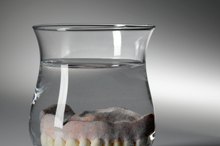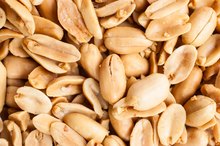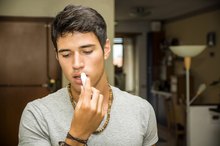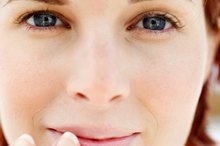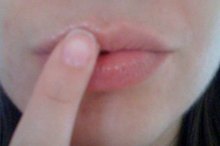What does fact checked mean?
At Healthfully, we strive to deliver objective content that is accurate and up-to-date. Our team periodically reviews articles in order to ensure content quality. The sources cited below consist of evidence from peer-reviewed journals, prominent medical organizations, academic associations, and government data.
- Medline Plus: Chapped Lips
- Family Doctor: Mouth Problems
- Mayo Clinic: Cold Sore
- Medline Plus: Mouth Sores
The information contained on this site is for informational purposes only, and should not be used as a substitute for the advice of a professional health care provider. Please check with the appropriate physician regarding health questions and concerns. Although we strive to deliver accurate and up-to-date information, no guarantee to that effect is made.
Blisters on Chapped Lips
Sore, red, chapped lips can crack open when you eat, drink, talk and smile 1. Blisters on the lips can make the problem even more painful. Although you can treat and prevent most cases of chapped and blistered lips through home care, mouth sores and irritation can sometimes indicate underlying medical conditions, tumors or allergic reactions 14. See your doctor if the blisters last longer than two weeks or if you experience other symptoms, such as fever, difficulty swallowing, drooling or skin rashes.
Causes
Exposure to the sun and dry, cold winter air can cause lips to crack, peel and blister. Biting at your lips or licking them in an attempt to soothe their dryness can worsen the condition. Cold sores -- fluid-filled lesions on the mouth caused by the herpes simplex virus -- can cause blisters on your lips, as well as chapping and irritation 4.
Identification
Dry, Cracked Corners of the Mouth
Learn More
Chapped lips and blisters caused by dehydration usually start out with mild irritation or redness and worsen over time if you fail to remedy the conditions causing the dryness 1. If you go outdoors without protecting your lips with sunscreen, sun damage can cause the same blistering, drying and scaling on your lips as it does on other parts of your body.
Your mouth may tingle for several days before a cold sore flare-up. Cold sores start with small blisters that break and ooze, then crust over. The sores usually clear up within two weeks.
- Chapped lips and blisters caused by dehydration usually start out with mild irritation or redness and worsen over time if you fail to remedy the conditions causing the dryness 1.
Treatments
Cold sores usually go away without treatment, but your doctor may recommend using a combination of topical treatments, such as:
- Acyclovir
- to decrease pain
- shorten the duration of the outbreak
If you experience repeated cold sore outbreaks, your doctor may recommend staying on an oral antiviral to prevent a recurrence.
Prevention/Solutions
Vitamins and Minerals for Fever Blisters
Learn More
Drinking plenty of water throughout the winter months can keep your lips soft and hydrated. Always put on lipstick or lip balm before heading outdoors in dry, cold weather. Run a humidifier in your home to keep the air humid. Nutritional deficiencies, such as:
- those of B-complex vitamins
- iron
- can cause dry
- cracked lips
- according to dermatologist Nelson Lee Novick
- who recommends taking a daily multivitamin supplement
- Drinking plenty of water throughout the winter months can keep your lips soft and hydrated.
- Run a humidifier in your home to keep the air humid.
Warning
Cracked, blistered lips are susceptible to infection, according to dermatologist Diana Bihova. In “The Doctors Book of Home Remedies," Bihova recommends applying an over-the-counter antibiotic ointment to prevent infection and a hydrocortisone ointment to speed healing.
Related Articles
References
Writer Bio
A former children's librarian and teacher living in Dallas, Erin Carson loves to share her knowledge of both literature and parenting through her writing. Carson has a master's degree in library science and a bachelor's degree in English literature. As a freelance writer, Carson has published numerous articles on various websites.
